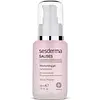What's inside
What's inside
 Key Ingredients
Key Ingredients

 Benefits
Benefits

 Concerns
Concerns

No concerns
 Ingredients Side-by-side
Ingredients Side-by-side

Water
Skin ConditioningAlcohol Denat.
AntimicrobialPropylene Glycol
HumectantNiacinamide
SmoothingTriethyl Citrate
MaskingCitric Acid
BufferingHydroxyethylcellulose
Emulsion StabilisingSalicylic Acid
MaskingButylene Glycol
HumectantPentaerythrityl Tetra-Di-T-Butyl Hydroxyhydrocinnamate
AntioxidantAcetyl Dipeptide-1 Cetyl Ester
Skin ConditioningAesculus Hippocastanum Bark Extract
AstringentAlcohol
AntimicrobialAloe Barbadensis Leaf Juice
Skin ConditioningAlpha-Isomethyl Ionone
PerfumingAmmonium Glycyrrhizate
MaskingBiotin
AntiseborrhoeicBoswellia Serrata Gum
MaskingButylparaben
MaskingButylphenyl Methylpropional
PerfumingCaffeine
Skin ConditioningCI 17200
Cosmetic ColorantCitronellol
PerfumingLimonene
PerfumingDipropylene Glycol
HumectantDisodium EDTA
Ethylhexylglycerin
Skin ConditioningEthylparaben
PreservativeFaex Extract
Skin ConditioningHexyl Cinnamal
PerfumingLaureth-3
EmulsifyingLecithin
EmollientLinalool
PerfumingMethylparaben
PreservativePanthenol
Skin ConditioningParfum
MaskingPEG-40 Hydrogenated Castor Oil
EmulsifyingPEG/PPG-20/6 Dimethicone
EmulsifyingPhenoxyethanol
PreservativePolysorbate 20
EmulsifyingPotassium Sorbate
PreservativePropylparaben
PreservativeSodium Benzoate
MaskingSodium Hyaluronate
HumectantTrideceth-9
EmulsifyingTriethanolamine
BufferingTriisopropanolamine
BufferingZinc Gluconate
Skin ConditioningZinc PCA
HumectantWater, Alcohol Denat., Propylene Glycol, Niacinamide, Triethyl Citrate, Citric Acid, Hydroxyethylcellulose, Salicylic Acid, Butylene Glycol, Pentaerythrityl Tetra-Di-T-Butyl Hydroxyhydrocinnamate, Acetyl Dipeptide-1 Cetyl Ester, Aesculus Hippocastanum Bark Extract, Alcohol, Aloe Barbadensis Leaf Juice, Alpha-Isomethyl Ionone, Ammonium Glycyrrhizate, Biotin, Boswellia Serrata Gum, Butylparaben, Butylphenyl Methylpropional, Caffeine, CI 17200, Citronellol, Limonene, Dipropylene Glycol, Disodium EDTA, Ethylhexylglycerin, Ethylparaben, Faex Extract, Hexyl Cinnamal, Laureth-3, Lecithin, Linalool, Methylparaben, Panthenol, Parfum, PEG-40 Hydrogenated Castor Oil, PEG/PPG-20/6 Dimethicone, Phenoxyethanol, Polysorbate 20, Potassium Sorbate, Propylparaben, Sodium Benzoate, Sodium Hyaluronate, Trideceth-9, Triethanolamine, Triisopropanolamine, Zinc Gluconate, Zinc PCA
Water
Skin ConditioningGlycerin
HumectantPropanediol
SolventNiacinamide
SmoothingTriethylhexanoin
MaskingDicaprylyl Ether
EmollientC12-15 Alkyl Benzoate
AntimicrobialIsosorbide Dicaprylate
Skin ConditioningOctyldodecanol
EmollientBiosaccharide Gum-2
Skin ConditioningRosa Centifolia Flower Extract
AstringentTocopherol
AntioxidantPolyacrylate-13
Butylene Glycol
HumectantOctyldodecyl Xyloside
EmulsifyingPEG-30 Dipolyhydroxystearate
EmulsifyingPolyisobutene
Disodium EDTA
Ethylhexylglycerin
Skin ConditioningPolysorbate 20
EmulsifyingSorbitan Isostearate
EmulsifyingPhenoxyethanol
PreservativeWater, Glycerin, Propanediol, Niacinamide, Triethylhexanoin, Dicaprylyl Ether, C12-15 Alkyl Benzoate, Isosorbide Dicaprylate, Octyldodecanol, Biosaccharide Gum-2, Rosa Centifolia Flower Extract, Tocopherol, Polyacrylate-13, Butylene Glycol, Octyldodecyl Xyloside, PEG-30 Dipolyhydroxystearate, Polyisobutene, Disodium EDTA, Ethylhexylglycerin, Polysorbate 20, Sorbitan Isostearate, Phenoxyethanol
 Reviews
Reviews

Ingredients Explained
These ingredients are found in both products.
Ingredients higher up in an ingredient list are typically present in a larger amount.
Butylene Glycol (or BG) is used within cosmetic products for a few different reasons:
Overall, Butylene Glycol is a safe and well-rounded ingredient that works well with other ingredients.
Though this ingredient works well with most skin types, some people with sensitive skin may experience a reaction such as allergic rashes, closed comedones, or itchiness.
Learn more about Butylene GlycolDisodium EDTA plays a role in making products more stable by aiding other preservatives.
It is a chelating agent, meaning it neutralizes metal ions that may be found in a product.
Disodium EDTA is a salt of edetic acid and is found to be safe in cosmetic ingredients.
Learn more about Disodium EDTAEthylhexylglycerin (we can't pronounce this either) is commonly used as a preservative and skin softener. It is derived from glyceryl.
You might see Ethylhexylglycerin often paired with other preservatives such as phenoxyethanol. Ethylhexylglycerin has been found to increase the effectiveness of these other preservatives.
Niacinamide is a multitasking form of vitamin B3 that strengthens the skin barrier, reduces pores and dark spots, regulates oil, and improves signs of aging.
And the best part? It's gentle and well-tolerated by most skin types, including sensitive and reactive skin.
You might have heard of "niacin flush", or the reddening of skin that causes itchiness. Niacinamide has not been found to cause this.
In very rare cases, some individuals may not be able to tolerate niacinamide at all or experience an allergic reaction to it.
If you are experiencing flaking, irritation, and dryness with this ingredient, be sure to double check all your products as this ingredient can be found in all categories of skincare.
When incorporating niacinamide into your routine, look out for concentration amounts. Typically, 5% niacinamide provides benefits such as fading dark spots. However, if you have sensitive skin, it is better to begin with a smaller concentration.
When you apply niacinamide to your skin, your body converts it into nicotinamide adenine dinucleotide (NAD). NAD is an essential coenzyme that is already found in your cells as "fuel" and powers countless biological processes.
In your skin, NAD helps repair cell damage, produce new healthy cells, support collagen production, strengthen the skin barrier, and fight environmental stressors (like UV and pollution).
Our natural NAD levels start to decline with age, leading to slower skin repair, visible aging, and a weaker skin barrier. By providing your skin niacinamide, you're recharging your skin's NAD levels. This leads to stronger, healthier, and younger looking skin.
Another name for vitamin B3 is nicotinamide. This vitamin is water-soluble and our bodies don't store it. We obtain Vitamin B3 from either food or skincare. Meat, fish, wheat, yeast, and leafy greens contain vitamin B3.
The type of niacinamide used in skincare is synthetically created.
Learn more about NiacinamidePhenoxyethanol is a preservative that has germicide, antimicrobial, and aromatic properties. Studies show that phenoxyethanol can prevent microbial growth. By itself, it has a scent that is similar to that of a rose.
It's often used in formulations along with Caprylyl Glycol to preserve the shelf life of products.
Polysorbate 20 is made by combining ethoxylation of sorbitan, ethylene oxide, and lauric acid. It is a mild cleansing agent, surfactant, and emulsifier.
As a surfactant, it helps collect dirt and oils for washing. Emulsifiers prevent oils and water from separating.
Polysorbate 20 also adds scent to a product. Since it is made using sorbitol, it has a sweet scent. Sorbitol can also be found in fruits such as apples and peaches.
The lauric acid used to create Polysorbate 20 is often derived from coconuts.
Polysorbate 20 may not be fungal acne safe.
Learn more about Polysorbate 20Water. It's the most common cosmetic ingredient of all. You'll usually see it at the top of ingredient lists, meaning that it makes up the largest part of the product.
So why is it so popular? Water most often acts as a solvent - this means that it helps dissolve other ingredients into the formulation.
You'll also recognize water as that liquid we all need to stay alive. If you see this, drink a glass of water. Stay hydrated!
Learn more about Water